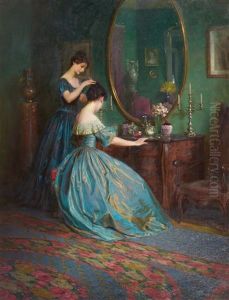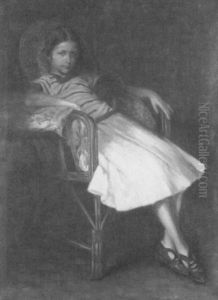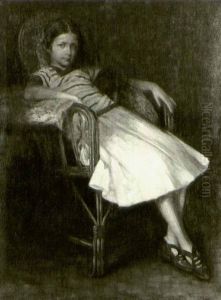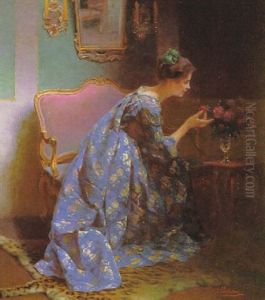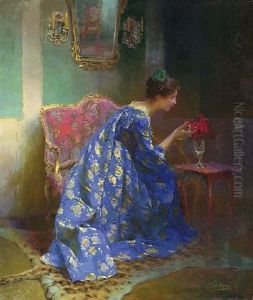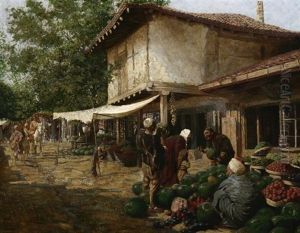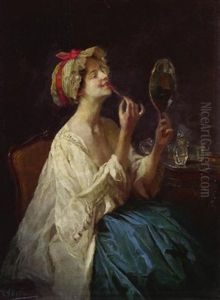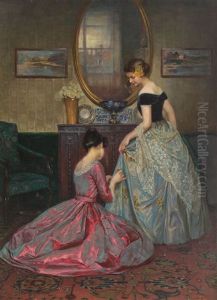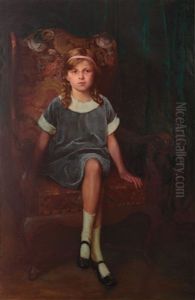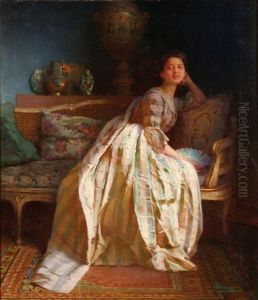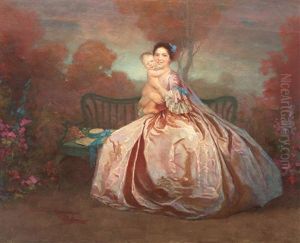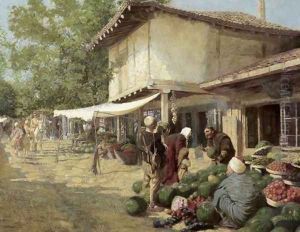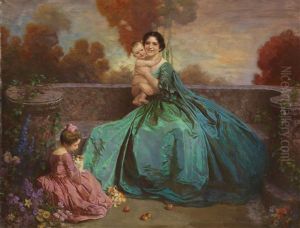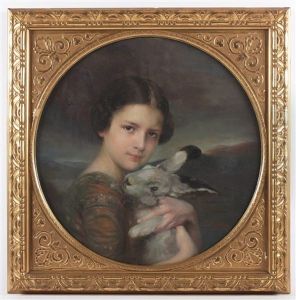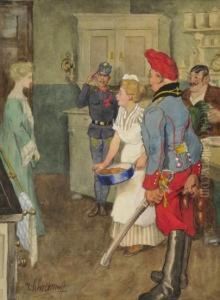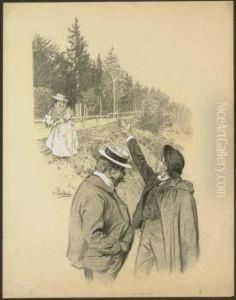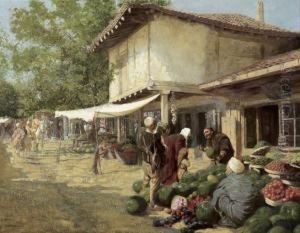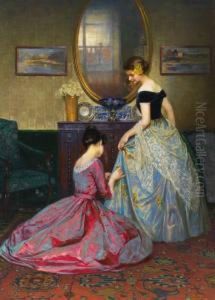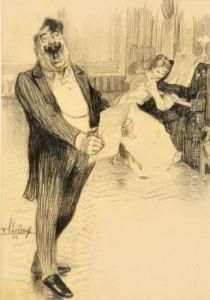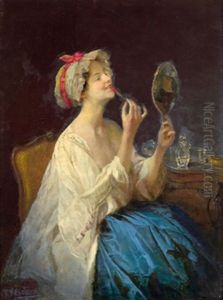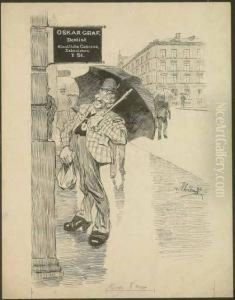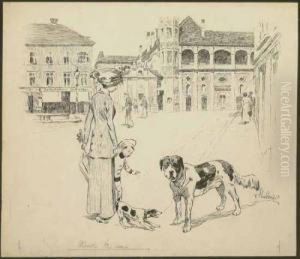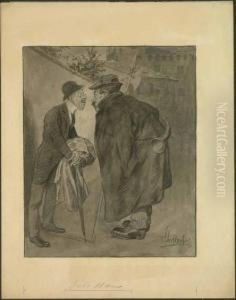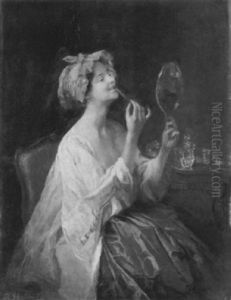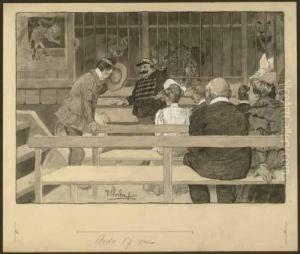Viktor Schramm Paintings
Viktor Schramm was an Austrian painter and illustrator born on September 6, 1865, in Vienna, Austria. He was known for his historical scenes, genre paintings, and portraits. Schramm studied at the Academy of Fine Arts Vienna under Christian Griepenkerl and later under historical painter Leopold Carl Müller. His education at the Academy provided him with a classical foundation in painting, which is evident in his meticulous attention to detail and his emphasis on historical accuracy in his works.
Schramm's early works were primarily history paintings, a genre that was highly popular in the 19th century. These artworks often depicted significant events from the past, allowing viewers to reflect on historical moments through a romanticized lens. As his career progressed, he began to diversify his subjects, painting scenes of contemporary life, landscapes, and portraits. Despite the variety in subject matter, his work remained grounded in the academic tradition he was trained in.
During his lifetime, Viktor Schramm gained a respectable reputation for his illustrations. He provided artwork for books and magazines, which helped to popularize his work beyond the confines of galleries and the art elite. This aspect of his career reflects the broader trend in the 19th century of artists engaging with commercial work to reach a wider audience.
Schramm's style is characterized by its fine detail, rich color palette, and often dramatic lighting, which imbued his scenes with a sense of gravitas and emotional depth. He was particularly adept at capturing the textures of materials, from the softness of fabric to the sheen of armor, which brought a tactile realism to his historical and genre scenes.
Despite his success, Viktor Schramm may not be as widely known today as some of his contemporaries. Nonetheless, his contributions to Austrian art during the late 19th and early 20th centuries continue to be appreciated by art historians and enthusiasts of historical painting. Schramm died on January 16, 1929, in Vienna, leaving behind a body of work that reflects the academic rigor and the historical interests of his time.
